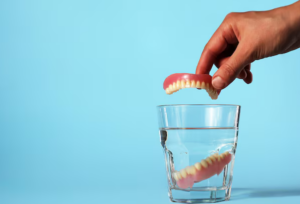
Early dental care is key to ensuring children develop healthy habits that last a lifetime. Regular dental visits, good hygiene practices, and proper care can prevent common dental issues like cavities. Educating children on the importance of oral health early on helps them understand the value of brushing, flossing, and using the right dental products. These efforts lay the groundwork for a strong, healthy smile as they grow.
The Importance of Early Dental Visits
Starting dental visits early is key to maintaining a child’s oral health. The first visit should ideally take place when the first tooth appears, which is around six months of age. Early visits are not just about checking for cavities; they also allow dentists to monitor the development of teeth and gums, ensuring everything is progressing normally. These visits provide parents with crucial information on how to care for their child’s teeth, from brushing techniques to dietary advice that promotes healthy teeth.
Regular dental visits also help establish a positive relationship between the child and the dentist. When children are introduced to dental care early on, they become more comfortable with the process, reducing the likelihood of fear or anxiety in future visits. This familiarity can lead to better cooperation during dental procedures as they grow older. Early visits allow the dentist in Reading to identify potential issues, such as misaligned teeth or early signs of decay, which can be addressed promptly before they become more serious.
In addition to monitoring tooth development, dentists can provide preventive care during these early visits. This might include applying fluoride varnishes to strengthen the teeth or using sealants to protect the molars from cavities. Such preventive measures are crucial because baby teeth are significant in holding space for the permanent teeth that will follow. Parents can help ensure a smoother transition to adult teeth by taking steps to protect them.
Parents should view these early dental visits as an opportunity to ask questions and learn about their child’s oral health. Many parents are unsure about the right age to start brushing with toothpaste, when to begin flossing, or how to handle teething issues. A dentist can provide personalised advice based on the child’s specific needs, helping parents establish a solid foundation for their child’s long-term oral health.
Teaching Good Oral Hygiene Habits
Building good oral hygiene habits from a young age is crucial for lifelong dental health. One of the first steps is introducing brushing as soon as the first tooth emerges. Parents should gently clean their child’s teeth twice a day using a soft-bristled toothbrush and a smear of fluoride toothpaste. As children grow, they can take on more responsibility, but parents need to supervise brushing until the child is around seven or eight years old to ensure it’s done correctly.
Flossing should be introduced when two teeth start touching, which can happen as early as age two or three. Teaching kids to floss helps prevent gum disease and cavities between the teeth, areas that a toothbrush might miss. While it can be challenging for young children to manage flossing independently, using floss sticks or picks designed for kids can make the process easier. Parents should initially floss for their children and gradually teach them how to do it themselves.
Another effective strategy is making oral hygiene fun. Children are more likely to brush and floss regularly if they enjoy the process. Parents can turn brushing into a game by playing their child’s favourite song during the two-minute brushing routine or using apps that make brushing interactive. Reward systems, such as sticker charts or small incentives, can motivate kids to maintain good oral hygiene habits consistently.
In addition to brushing and flossing, teaching children about a healthy diet is essential. Foods high in sugar, like candy and soda, contribute to tooth decay and should be limited. Instead, encourage snacks like fruits, vegetables, and cheese, which are better for teeth. Drinking water instead of sugary drinks also helps rinse away food particles and reduce the risk of cavities. Parents can help their children maintain a healthy smile by instilling these habits early.
Managing Common Dental Issues in Children
Cavities, also known as dental caries, are one of the most common dental issues in children. They occur when bacteria in the mouth break down sugar into acids that erode the tooth enamel. To prevent cavities, it’s important to limit sugary foods and drinks and ensure that children brush their teeth at least twice a day. Regular dental checkups are also crucial as they allow the dentist to catch cavities early, making treatment simpler and less invasive.
Another common issue in children is tooth sensitivity, which can occur when the enamel wears down, exposing the underlying dentin. This can make eating or drinking hot and cold foods uncomfortable for children. Using toothpaste designed for sensitive teeth can help alleviate discomfort, but it’s also important to consult a dentist to identify the underlying cause. In some cases, sensitivity might indicate a more severe issue that requires professional attention.
Thumb sucking and pacifier use are also common habits that can lead to dental problems if they persist beyond the toddler years. Prolonged thumb sucking can cause the teeth to become misaligned, leading to bite issues that might require orthodontic treatment later on. Parents should encourage their children to stop these habits by the age of three or four to avoid potential problems. Dentists can offer advice and strategies to help wean children off thumb-sucking or pacifier use.
In addition to these issues, accidents and injuries can risk children’s teeth. Active kids are often prone to falls and bumps, resulting in chipped or knocked-out teeth. Protecting your child’s teeth during activities is important by having them wear a mouthguard, especially if they’re involved in sports. If a tooth is knocked out, it should be kept moist, and the child should see a dentist immediately, as prompt action can sometimes save the tooth. Addressing dental issues promptly ensures your child maintains a healthy, pain-free smile.
Choosing the Right Dental Products for Kids
Selecting the right dental products for your child can significantly improve their oral health and hygiene habits. The first step is choosing a toothbrush appropriate for your child’s age. A soft-bristled brush with a small head is ideal for babies, while older children can use a slightly larger brush. Electric toothbrushes can also be a good option for older kids, as they can clean more effectively and be more fun.
Fluoride is essential for preventing cavities in toothpaste, but the amount used should be appropriate for the child’s age. A smear of toothpaste is sufficient for children under three, while a pea-sized amount is recommended for those aged three and up. Many toothpaste brands offer fun flavours and colourful packaging that can make brushing more appealing to children. Just ensure dental professionals approve the toothpaste and that it contains fluoride.
Flossing products are also essential, and using floss sticks or picks can make the process easier for children who may struggle with regular floss. These tools are often designed to be easy for small hands to hold and can make flossing less frustrating for both the child and the parent. Some floss picks come in fun colours or with characters, which can make the routine more engaging. Introducing these products early helps children develop the habit of flossing daily.
Mouthwash can be a useful addition to your child’s oral care routine, especially if they are prone to cavities or have braces. However, mouthwash is generally not recommended for children under six years old. For older children, choose an alcohol-free mouthwash designed for kids, with appealing flavours but not too harsh. Mouthwash can help reduce plaque and gingivitis and provide an extra layer of protection against cavities, making it a valuable part of a comprehensive oral care routine.






